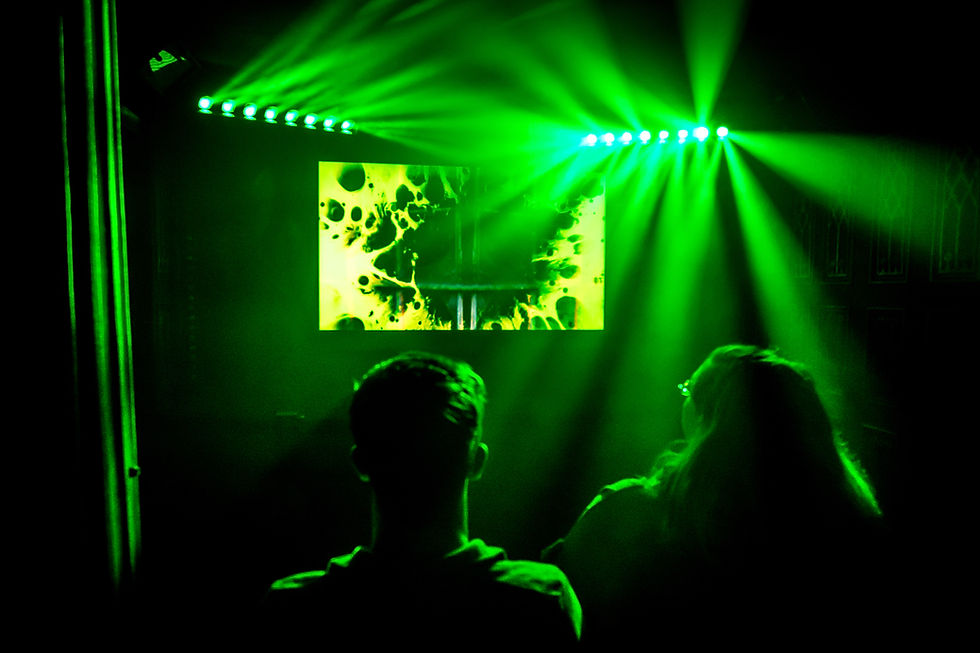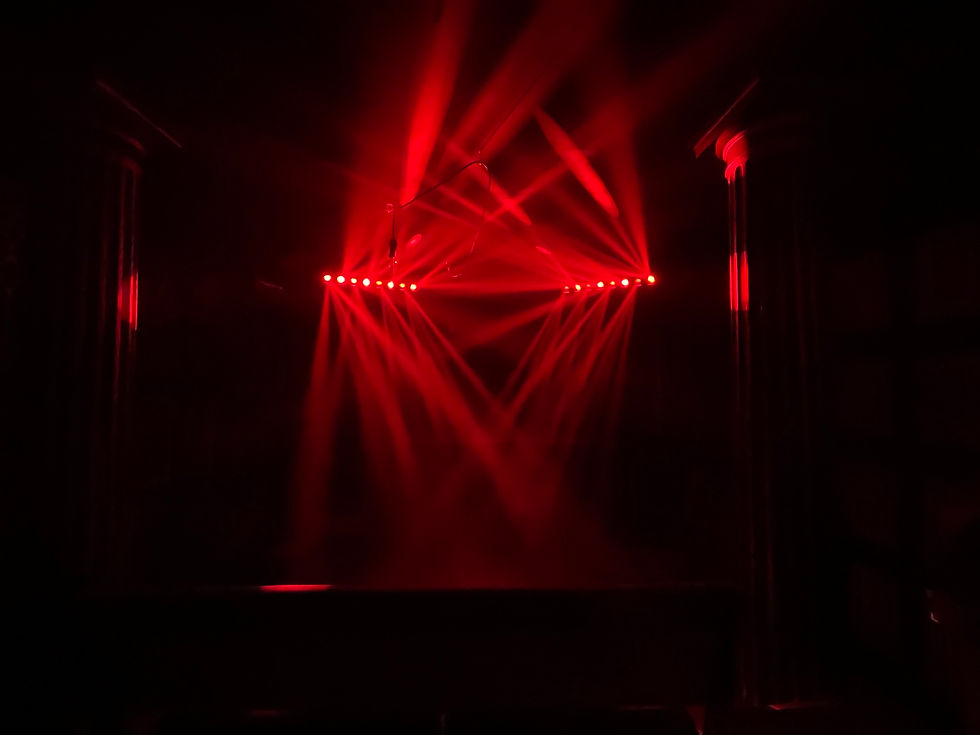IMMERSIVE DESIGN THEORY - "THE MAGIC THRESHOLD".
- dgoodman5
- Jun 9
- 3 min read
Updated: Jun 25
Navigating the Invisible Line Between Reality and Fiction in Immersive Design
In the world of immersive design, one of the most potent tools at our disposal is also one of the least talked about: The Magic Threshold.
This threshold isn’t a physical object, though it can be. It’s the moment in the customer journey when your audience leaves the real world behind and enters the fictional universe you've crafted. Whether subtly blended or sharply defined, the placement of this threshold can fundamentally shape your audience’s sense of immersion, engagement, and even perceived value.

Where Is Your Threshold?
One of the most powerful aspects of the Magic Threshold is that you, the designer, chooses where it lives. It can appear at multiple moments along the customer journey:
At the first point of exposure: A themed advertisement, an in-world website, or a cryptic booking platform can set the tone. This early threshold gives you more narrative real estate but requires total commitment to tone and detail from the outset.
At the point of purchase: Perhaps the customer receives an “invitation” rather than a ticket confirmation—an in-world message drawing them deeper into your narrative space.
At the venue entrance: The shift begins as they approach your location. Perhaps the real world gradually falls away—street noise replaced by ambient sound design, actors begin to appear, lighting shifts.
At the final step before entry: The threshold becomes a clear, hard line. A curtain, a door, a blackout. One moment, they are an audience. The next, they are participants.
Each of these placements has its own strengths—and compromises.
The Trade-off: Immersion vs. Access
The earlier you place the threshold, the more immersive the experience becomes. Narrative can seep into every moment of the customer journey, increasing emotional investment and even the perceived value of the ticket. But there’s a catch: you sacrifice traditional customer service.
Once someone is inside the fiction, it’s no longer appropriate, or sometimes even possible, for a character to break role to answer questions about ticket issues, accessibility, or directions to the bathroom. A spaceship engineer won’t know what "Eventbrite" is. A knight won’t know what "Emails" are.
Bridging the Gap: Smart Design Solutions
There are two primary ways to address this friction:
Design upstream support: Identify customer pinch points and solve them before the threshold is crossed. Ensure your website, confirmation emails, and FAQs are clear, accessible, and exhaustive. Consider chatbots or real-world support lines that exist prior to entry into the immersive space.
Build support into the fiction: Turn your logistical touchpoints into part of the story. Your check-in clerk can be an in-character archivist scanning ancient scrolls (i.e., ticket QR codes). A barkeep can verify guests on a “reservations list” as part of the in-world experience. Information kiosks become fortune tellers, spaceship consoles, or magical guides—serving both narrative and functionality.
Fluid vs. Firm Thresholds
Not every threshold needs to be a dramatic curtain-drop.
Blended transitions allow guests to slowly acclimate. Soundscapes change, actors appear organically, environmental storytelling increases with each step. This is gentle, welcoming, and effective for narrative-rich or family-friendly experiences.
Hard thresholds, like sensory deprivation like blindfolds, or blackout moments followed by a dramatic reveal, can deliver powerful emotional impact. These are best suited to attractions designed to thrill, disorient, or astound—haunted houses, sci-fi portals, or mystery-based worlds.
Final Thought: Own Your Threshold
As an immersive designer, the Magic Threshold is your invitation to intention. Where you place it, and how you support it, will shape every moment that follows. Whether your guests slip gradually into another world or are yanked into it in a moment of awe, the threshold is a tool of transformation.
Use it wisely. Design it deliberately. And never forget: it’s the moment where belief begins.
DESIGNING IMMERSIVE.
It's complicated, intricate and specialist. Koncept has it mastered.
Koncept are specialists in writing and designing immersive attractions that stand out. With a portfolio of award-winning productions, Koncept has a proven track record of transforming ideas into fully realized, expertly written experiences that customers will pay to be immersed in.
_edited_p.png)




Comments